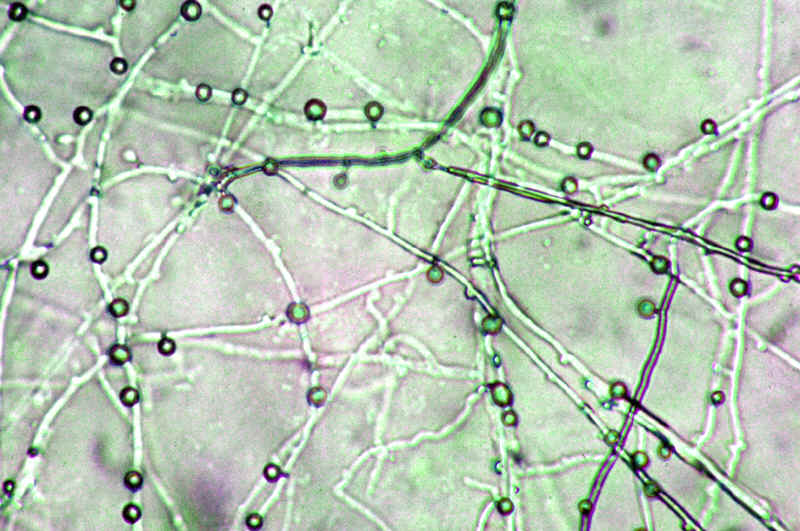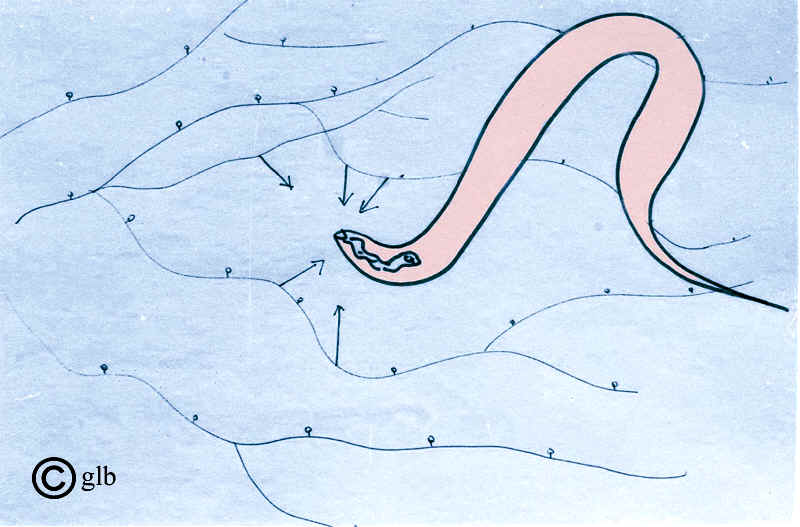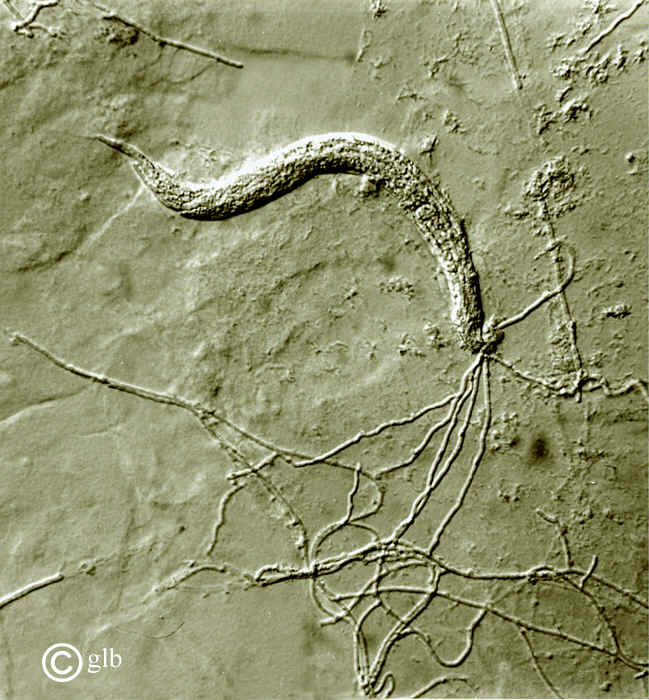Adaptations
Nematodes
Pleurotus isn't the only one interested in making a meal out of rotting wood. Microscopic nematodes, or roundworms, burrow their way through the rotting wood to make a meal out of any wood, microbes, or fungus that gets in it's path. But Pleurotus ostreatus will have none of that, and turns the table on this would be predator by producing secretory cells all over its hyphae.

Small secretory cells develop in response to
the threat of predators.
Image provided courtesy of
George Barron.
These secretory cells excrete a potent toxin that functions as a paralytic to any would be diners on Pleurotus hyphae. But that's not all. It would be wasteful to ignore the delicious tube of nutrients that just delivered itself to your doorstep so Pleurotus ostreatus feasts!


Pleurotus ostreatus
hyphae enter through a nematode's mouth and digest it.
Images provided courtesy of
George Barron.
Pleurotus ostreatus grows its hyphae into the nematode's mouth and dump digestive enzymes into it. It feeds on the nematode from the inside out to simultaneously solve its nitrogen problem and defend itself from a potential predator. Whoa!
You'll be happy to know that the fruiting body of the mushroom never develops these secretory cells, so you don't have to worry about ingesting any toxins when you cook up your own oyster mushrooms.
If you're interested in more fungal parasites I recommend checking out Dr. George Barron's amazing War of the Fungi in the Microworld website or check out this entertaining clip depicting another nematophagous fungi lassoing its prey. Otherwise, click here to continue on to learning about how Pleurotus ostreatus reproduces.
